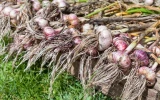Can Garlic Plants Be Transplanted? (How and When)
Garlic plants have a versatile nature that extends to their cultivation, including the ability to be transplanted. This process, which involves careful timing and technique, can enhance garden layout flexibility and optimize growth conditions. In this article, we will delve into the practical aspects of transplanting garlic plants and outline the optimal timing for transplantation to ensure minimal disruption and maximum yield.
Garlic plants can be transplanted. It's best to do this in the fall, as garlic prefers a cool growing period before the soil freezes. Carefully dig up the garlic, keeping the roots intact, and replant them in well-drained soil, spaced 6 inches apart and 2 inches deep.
While garlic is pretty hardy, the key to success lies in the careful handling of the bulbs to avoid damage, ensuring they have enough time to establish roots before extreme weather hits. This little detail might just be the difference between a bountiful harvest and a garden mishap. Let's peel back more layers of the garlic-growing mystery together.
Summary
- Transplanting garlic allows gardeners to better utilize their garden space by redistributing garlic plants to prevent overcrowding and promote better air circulation.
- Garlic seedlings are ready to be moved when they have developed strong root systems and at least two sets of true leaves, usually a few weeks after germination.
- Spring offers a chance to transplant garlic, which is particularly advantageous for those who missed the fall planting window.
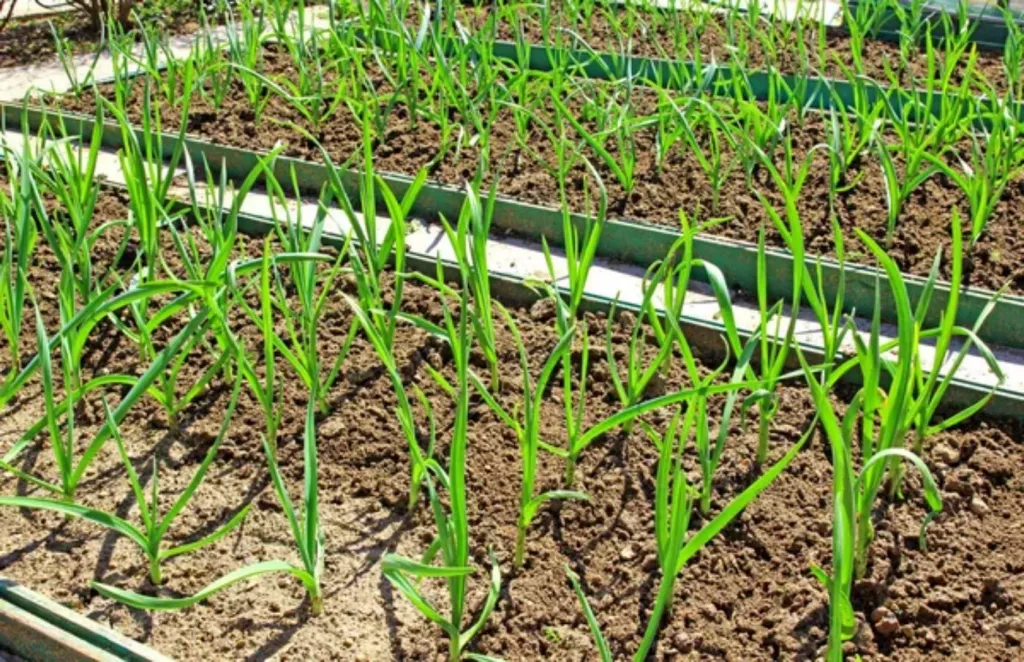
On this page:
Can You Transplant Garlic?
You can transplant garlic, and it's a practice some gardeners use to manage their garlic crops more effectively. Garlic is typically planted from cloves, which are the individual segments of a garlic bulb.
Transplanting involves moving a garlic plant from one location to another during its growth cycle. This process can be useful for several reasons, such as the following;
1. It optimizes space
Transplanting allows gardeners to make the most of their gardening space. For instance, if garlic was initially planted in a dense or haphazard manner, transplanting can help redistribute the plants to use the space more effectively.
It also enables succession planting, where gardeners can move garlic to make room for another crop, ensuring continuous production throughout the growing season.
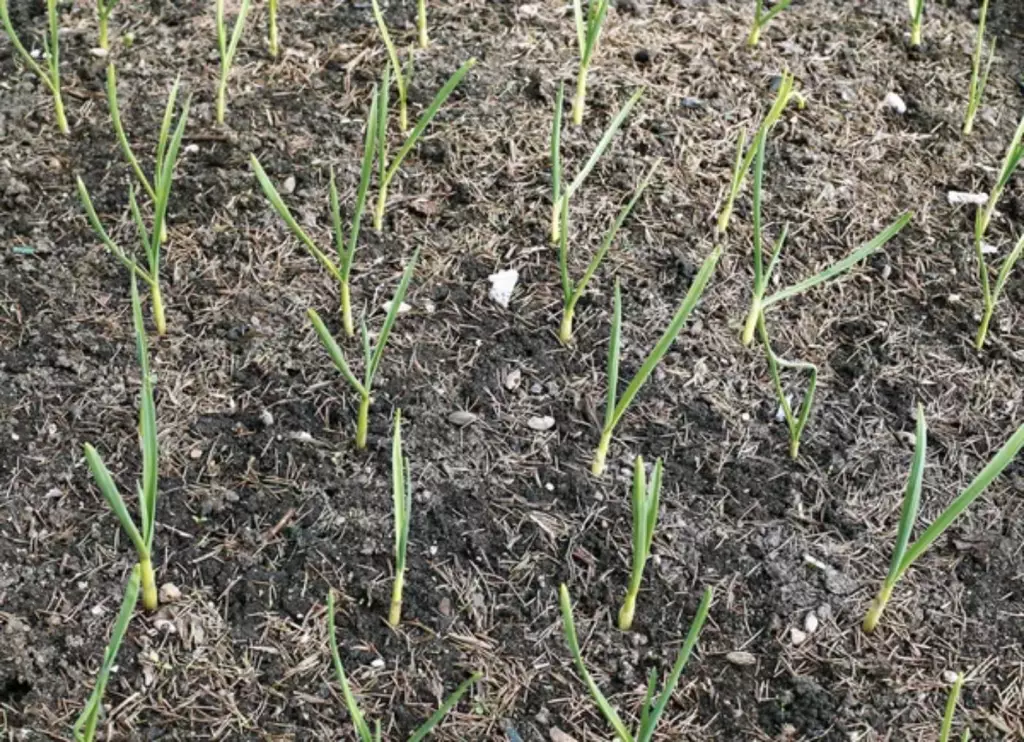
As plants grow, their spatial needs can change. Transplanting garlic can help adjust to these needs, preventing overcrowding and promoting better air circulation, which reduces the risk of fungal diseases. You can read this article for more information on the optimal spacing for garlic seeds.
2. It can help improve soil conditions
Garlic has specific soil requirements for optimal growth, including well-drained, fertile soil with a neutral pH. Transplanting allows gardeners to move garlic to areas with soil conditions that better meet these needs if they were not initially planted in such conditions.
Through transplanting, garlic can also be moved to areas with richer soil or where compost or other organic matter has been added, ensuring that the plants have access to essential nutrients throughout their growth.
It also helps prevent soil depletion. Repeatedly planting the same crop in the same spot can deplete the soil of specific nutrients. Transplanting helps in crop rotation practices, preventing soil depletion and disrupting cycles of pests and diseases.
3. It is good for reorganizing a garden
Gardeners may wish to rearrange their gardens for aesthetic reasons or more practical layouts. Transplanting garlic allows for the redesigning of garden spaces, making them more accessible for maintenance or harmonizing with the garden's overall design.
Transplanting also offers the opportunity to experiment with different garden designs and plant associations, which can be crucial for companion planting strategies.
It allows gardeners to observe how plants interact with each other and with the environment, adjusting as necessary for optimal growth.
4. It helps prevent pests and diseases
Moving garlic plants can help interrupt the life cycles of pests that may have become established in a particular area of the garden.
Similarly, if a specific area starts showing signs of soil-borne diseases, transplanting garlic to a healthier part of the garden can prevent the spread of disease to the plants.
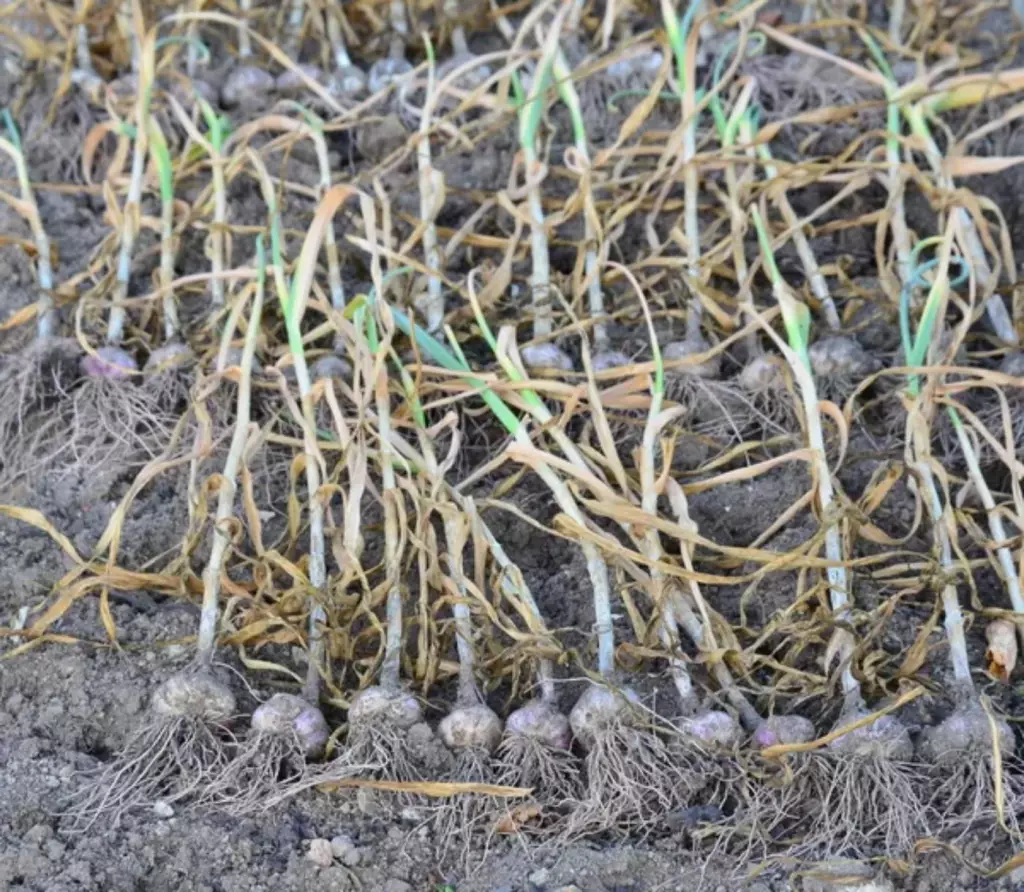
5. It can help garlic adapt to environmental conditions
As the season progresses, the pattern of sunlight and shade in the garden can change. Transplanting allows garlic plants to be moved to areas with optimal sunlight exposure, which is crucial for their development.
If initially planted in an area with poor drainage, transplanting garlic to a location with better drainage can prevent issues like root rot and fungal diseases.
6. It can be helpful in emergency situations
Sometimes, unforeseen circumstances, like construction work, pest infestations, or waterlogging due to heavy rains, may necessitate the moving of plants. Transplanting provides a way to save the crop under such conditions.
How to Transplant Garlic
Garlic plants thrive in well-drained soil enriched with organic matter. Begin your transplanting process by selecting a sunny location as garlic requires full sun to grow effectively.
Prepare the area by loosening the soil and mixing in additions such as well-rotted manure or compost to boost the nutrient content.
Things you need to prepare when transplanting garlic
- Garlic bulbs
- Compost or well-rotted manure
- Fertilizer
- Watering can
- Mulch
- Spade or trowel
Steps in transplanting garlic
-
Choose a sunny spot: Garlic thrives in full sun with well-drained soil. Ensure the new location gets plenty of sunlight and has space for the garlic to grow.
-
Prepare the soil: Loosen the soil to a depth of about 12 inches and ensure it is moist but not waterlogged. If you're using a pot, make sure it has adequate drainage holes.
-
Transplanting steps:
- Step 1: Choose healthy garlic bulbs and gently separate them into individual cloves right before planting.
- Step 2: Plant the cloves pointy-end up, around two inches deep and six inches apart to give them enough space to grow.
- Step 3: After planting, water the soil gently to settle it around the cloves, then apply a layer of mulch to retain moisture and regulate soil temperature.
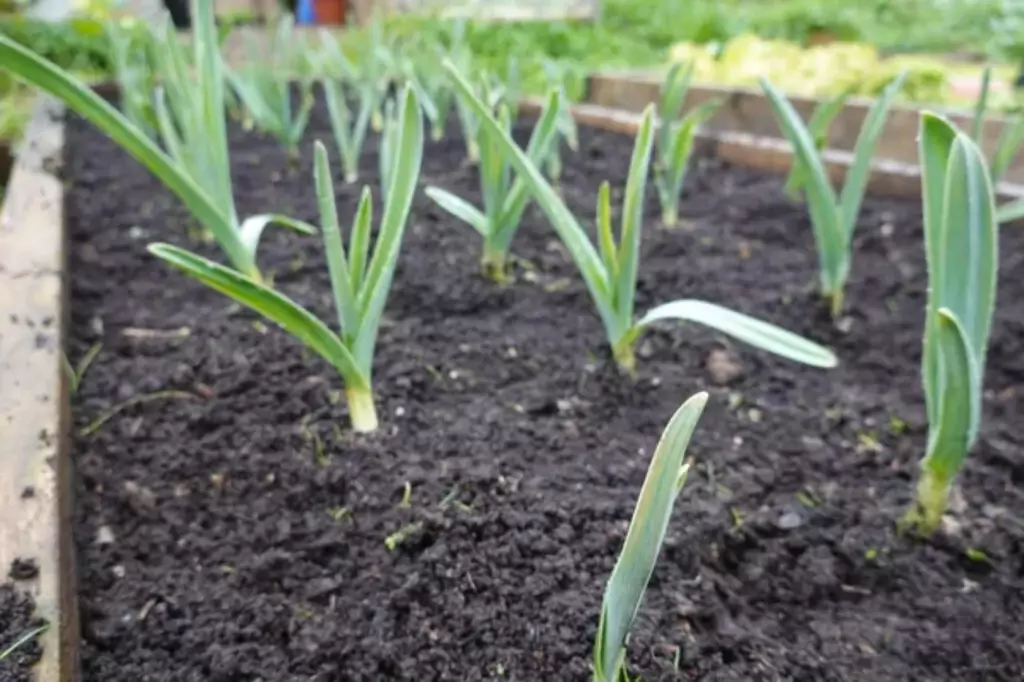
- Aftercare: Keep the soil moist, especially during dry periods. Fertilize with a balanced fertilizer to provide the necessary nutrients for your garlic as it grows. Keep an eye out for pests and deal with any issues promptly to ensure a healthy garlic crop.
When to Transplant Garlic Seedlings
Best time for transplanting garlic
- Fall planting: Garlic is usually planted in the fall in most climates, about 4 to 6 weeks before the ground freezes. This allows the cloves (or in rare cases, seedlings) to establish roots before the winter, allowing them to survive the frost.
In spring, these plants will be the first to emerge and continue growing.
- Spring planting: If you missed the fall planting, you can plant garlic in the early spring as soon as the ground can be worked. However, spring-planted garlic usually produces smaller bulbs because the plants have less time to grow.
Timing considerations when transplanting garlic
In cooler climates, early to mid-fall is ideal. In warmer climates where garlic is planted in the spring, do so as early as possible to maximize growth time before the hot summer.
Remember, garlic typically matures and is ready for harvest in late spring or early summer, depending on the variety and planting time. Watch for the lower leaves to turn brown as a sign that bulbs are nearing maturity.
Since garlic is most commonly propagated from cloves, if you're starting from seedlings or a less common method, ensure that these seedlings are strong and healthy before transplanting. You can buy garlic seed from reputable sellers listed in this article.
This approach is less conventional and may require adjustments based on specific growing conditions and garlic varieties.
Can Garlic Plants Be Transplanted in the Fall?
Fall is an ideal time to transplant garlic due to the cooler temperatures allowing the roots to establish before the winter freeze.
Before transplanting, it's essential to select a location where the ground remains unfrozen for several weeks after planting. This provides time for your garlic roots to develop sufficiently.
When preparing to transplant, ensure the soil is loose, fertile, and well-drained to encourage growth. Aim for a pH between 6.0 and 7.0. You can find a more detailed explanation of the ideal conditions for garlic in this article.
Mulching is crucial post-transplanting; it insulates the soil, maintaining a more consistent temperature around the garlic cloves and minimizing the risk of frost heaving.
It's best to transplant garlic in late fall, around four to six weeks before the first expected frost. At this time, temperatures are usually within the optimal range - not too warm, not too cold.
However, transplant your garlic before the ground freezes to allow time for the roots to settle.
Here's a quick breakdown:
- Choose a sunny spot with well-drained soil.
- Test soil pH; adjust to between 6.0 and 7.0 as needed.
- Plant cloves about 2 inches deep, with pointed ends up, 6 inches apart.
- Mulch generously with straw or leaves after planting.
- Water your newly transplanted garlic if rainfall isn't sufficient.
Transplanting garlic in the fall can lead to a robust harvest the following year. With the right preparation and care, you can give your garlic a strong foundation for winter growth.
Can Garlic Be Transplanted in the Spring?
Spring provides a second opportunity to transplant garlic if you missed planting in the fall. Start as soon as the soil can be worked to ensure your garlic has ample time for spring growth.
Choose a sunny spot with well-drained soil; garlic prefers loamy or sandy soil. Since they're hardy, they'll adapt, but they do need at least six hours of sunlight per day.
Here are a few steps to transplant garlic in the spring:
- Prepare the bed: Loosen the soil and ensure it's free of weeds.
- Space adequately: Plant the garlic cloves about 4 inches apart and 2 inches deep.
- Provide mulch: A light layer can protect your young garlic and retain soil moisture.
- Watering needs: Keep the soil moist. Water deeply once a week if there isn't sufficient rain.
At What Stage Should Seedlings Be Transplanted?
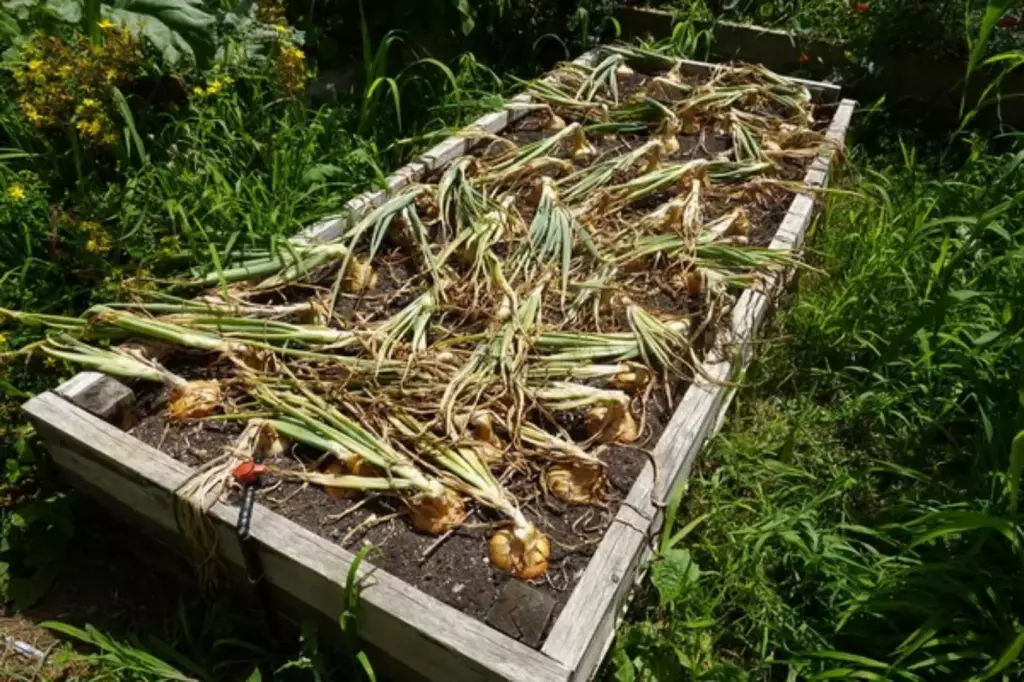
Seedlings are ready to be transplanted when they’ve developed strong root systems and at least two sets of true leaves. This usually happens a few weeks after germination.
For hardneck garlic, which is robust and suited for colder climates, ensure that you give it plenty of room for growth.
Softneck garlic varieties, often grown in milder climates, also benefit from early transplanting but are more flexible when it comes to space. However, both types need careful handling to avoid root damage.
Transplant garlic seedlings when:
- Roots are well-developed but not overcrowding the pot.
- Two sets of true leaves have appeared.
- Seedlings are about 3-4 inches tall for a head start.
By transplanting at the right stage, you're setting vegetable plants like garlic up for success, giving them the space and resources they need to thrive.
